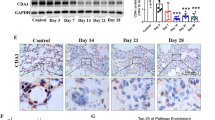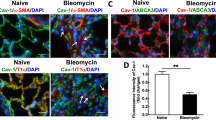Abstract
Bronchiolitis obliterans (BO) after lung transplantation prevents a satisfactory prognosis, and recent studies suggested that interleukin-10 (IL-10) gene transfer to distant organs could inhibit BO in rodent models. Although delivery of the therapeutic gene to a local airway would be favored to minimize systemic effects, current limitations include lower gene transfer efficiency to airway epithelium. As recombinant Sendai virus (SeV) can produce dramatically efficient gene transfer to airway epithelium, we determined if SeV-mediated IL-10 gene transfer to the local airway would inhibit bronchial fibrous obliteration in murine tracheal allografts. Administration of cyclosporine A (CsA) significantly promoted not only recovery of the injured airway epithelium but also SeV-mediated IL-10 expression (CsA−versus CsA+=228±78 versus 3627±1372 pg/graft with 5×107 pfu), thereby suggesting the requirement of epithelia for efficient gene transfer. Even at the highest expression, no significant leakage of IL-10 was evident in the systemic circulation, and the induction of interferon-γ was completely diminished on day 7 by IL-10 gene transfer. As a result, luminal loss was significantly prevented in allografts treated with SeV-IL-10 (luminal opening, all control groups: 0% respectively, and SeV-IL-10 5×107 pfu: 25.7±10.5%), an effect that was enhanced by short-term CsA treatment (SeV-IL-10 5×107 pfu with CsA: 63.7±12.7%). We propose that SeV is a useful vector that can target airway epithelium to prevent BO avoiding putative systemic effect.
This is a preview of subscription content, access via your institution
Access options
Subscribe to this journal
Receive 12 print issues and online access
$259.00 per year
only $21.58 per issue
Buy this article
- Purchase on Springer Link
- Instant access to full article PDF
Prices may be subject to local taxes which are calculated during checkout





Similar content being viewed by others
References
Hosenpud JD et al. The registry of the International Society for Heart and Lung Transplantation: fourteenth official report–1997. J Heart Lung Transplant 1997; 16: 691–712.
Sundaresan S et al. Prevalence and outcome of bronchiolitis obliterans syndrome after lung transplantation. Ann Thorac Surg 1995; 60: 1341–1346.
King MB et al. Cyclosporine reduces development of obliterative bronchiolitis in a murine heterotopic airway model. Transplantation 1997; 63: 528–532.
Hertz MI et al. Reproduction of the obliterative bronchiolitis lesion after heterotopic transplantation of mouse airways. Am J Pathol 1993; 142: 1945–1951.
Yamada A et al. Blocking the CD28-B7 T-cell costimulatory pathway abrogates the development of obliterative bronchiolitis in a murine heterotopic airway model. Transplantation 2000; 69: 743–749.
Boehler A et al. Upregulation of T-helper 1 cytokines and chemokine expression in post-transplant airway obliteration. Am J Respir Care Med 1999; 159: 1910–1917.
Ross DJ et al. Lung allograft dysfunction correlates with gamma-interferon gene expression in bronchoalveolar lavage. J Heart Lung Transplant 1999; 18: 627–636.
Bromberg JS . IL-10 immunosuppression in transplantation. Curr Opin Immunol 1995; 7: 639–643.
Mosmann TR, Sad S . The expanding universe of T-cell subsets: Th1, Th2 and more. Immunol Today 1996; 17: 138–146.
Boehler A et al. Adenovirus-mediated interleukin-10 gene transfer inhibits post-transplant fibrous airway obliteration in an animal model of bronchiolitis obliterans. Hum Gene Ther 1998; 9: 541–551.
Yonemitsu Y et al. Efficient transfer to airway epithelium using recombinant Sendai virus. Nat Biotechnol 2000; 18: 970–973.
de Waal Malefyt R et al. IL-10 and v-IL-10 strongly reduce antigen-specific human T cell proliferation by diminishing the antigen-presenting capacity of monocytes via down-regulation of class II MHC expression. J Exp Med 1991; 174: 915–924.
D’Andrea A et al. Interleukin 10 (IL-10) inhibits human lymphocyte interferon gamma production by suppressing natural killer cell stimulatory factor/IL-12 synthesis in accessory cells. J Exp Med 1993; 178: 1041–1048.
Ding L et al. IL-10 inhibits macrophage costimulatory activity by selectively inhibiting the up-regulation of B7 expression. J Immunol 1993; 151: 1224–1234.
Nicod LP et al. Interleukin-10 decreases tumor necrosis factor alpha and beta in alloreaction induced by human lung dendritic cells and macrophages. Am J Respir Cell Mol Biol 1995; 59: 559–565.
Song S et al. Interleukin-10 inhibits interferon-gamma induced intercellular adhesion molecule-1 gene transcription in human monocytes. Blood 1997; 89: 4461–4469.
Kato A et al. Initiation of Sendai virus multiplication from transfected cDNA or RNA with negative or positive sense. Genes Cells 1996; 1: 569–579.
Kato A et al. The paramyxovirus, Sendai virus, V protein encodes a luxury function required for viral pathogenesis. EMBO J 1997; 16: 578–587.
Yu D et al. Sendai virus-based expression of HIV-1 gp 120: reinforcement by the V(-) version. Genes Cells 1997; 2: 457–466.
Sakai Y et al. Accommodation of foreign genes into the Sendai virus genome: sizes of inserted genes and viral replication. FEBS Lett 1999; 456: 221–226.
Kolakofsky D et al. Paramyxovirus RNA synthesis and the requirement for hezamer genome length: the rule of six revisited. J Virol 1998; 72: 891–899.
Yonemitsu Y, Kaneda Y . Hemagglutinating virus of Japan-liposome-mediated gene delivery to vascular cells. In: Molecular Biology of Vascular Diseases. Methods in Molecular Medicine. Baker AH (ed): Humana Press: Clifton, 1999, pp 295–306.
Acknowledgements
We thank H Fujii and R Hashimoto for technical assistance.
Author information
Authors and Affiliations
Rights and permissions
About this article
Cite this article
Shoji, F., Yonemitsu, Y., Okano, S. et al. Airway-directed gene transfer of interleukin-10 using recombinant Sendai virus effectively prevents post-transplant fibrous airway obliteration in mice. Gene Ther 10, 213–218 (2003). https://doi.org/10.1038/sj.gt.3301847
Received:
Accepted:
Published:
Issue Date:
DOI: https://doi.org/10.1038/sj.gt.3301847
Keywords
This article is cited by
-
miR-29 Inhibits Bleomycin-induced Pulmonary Fibrosis in Mice
Molecular Therapy (2012)
-
Lung transplantation: infection, inflammation, and the microbiome
Seminars in Immunopathology (2011)
-
Perfluorochemical (PFC) liquid enhances recombinant adenovirus vector-mediated viral interleukin-10 (AdvIL-10) expression in rodent lung
Journal of Inflammation (2007)
-
Impact of deletion of envelope-related genes of recombinant Sendai viruses on immune responses following pulmonary gene transfer of neonatal mice
Gene Therapy (2007)
-
A defective nontransmissible recombinant Sendai virus mediates efficient gene transfer to airway epithelium in vivo
Gene Therapy (2004)



